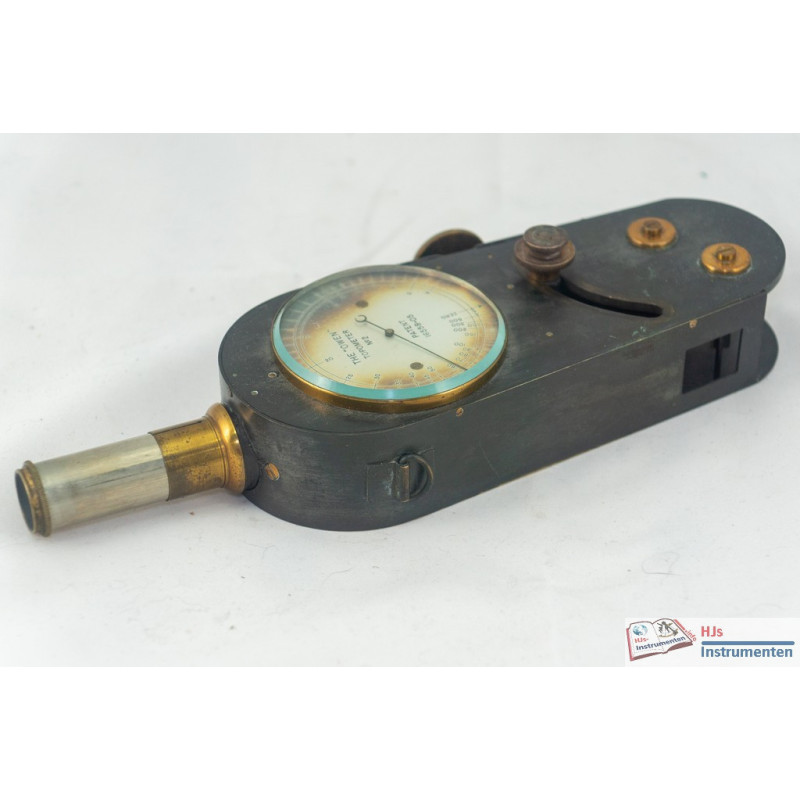






J.A. Sinclair "Owen" topometer No2
The "Owen" topometer No2 is one of those 'gadget' developments which seems a great idea but obviously hasn't caught to a wider audience. the basic principle of the instrument is that of a sextant, i.e. it measures angles. The way it does this is quite ingenious as both mirrors can be rotated. The traditional horizon can be either set 'parallel' at zero, or can be made to stand at 45 degrees giving a straight angle (whith the fine adjustment set to zero). From this 'zero' onwards the angle is measured by rotating the index mirror. The cotangent of the angle can now be read on the circular scale. With a scale running from around 500 (0.11 degree) to 4 (14 degrees) small angles can be read with a reasonable accuracy of around 0.05 degrees for small angles. Larger angles are not that accurate, with an accuracy of up to 1 degree.
For small angles the accuracy is about as good as that of the regular transit back then. For larger angles however, the accuracy is definitely worse. The main draw back is that only offset angles can be measured i.e. from a certain angle between 0 to at most 90 degrees with an angle of 14 degrees for the offset angle. A theodolite / transit can obtain its accuracy for any angle.
Data sheet